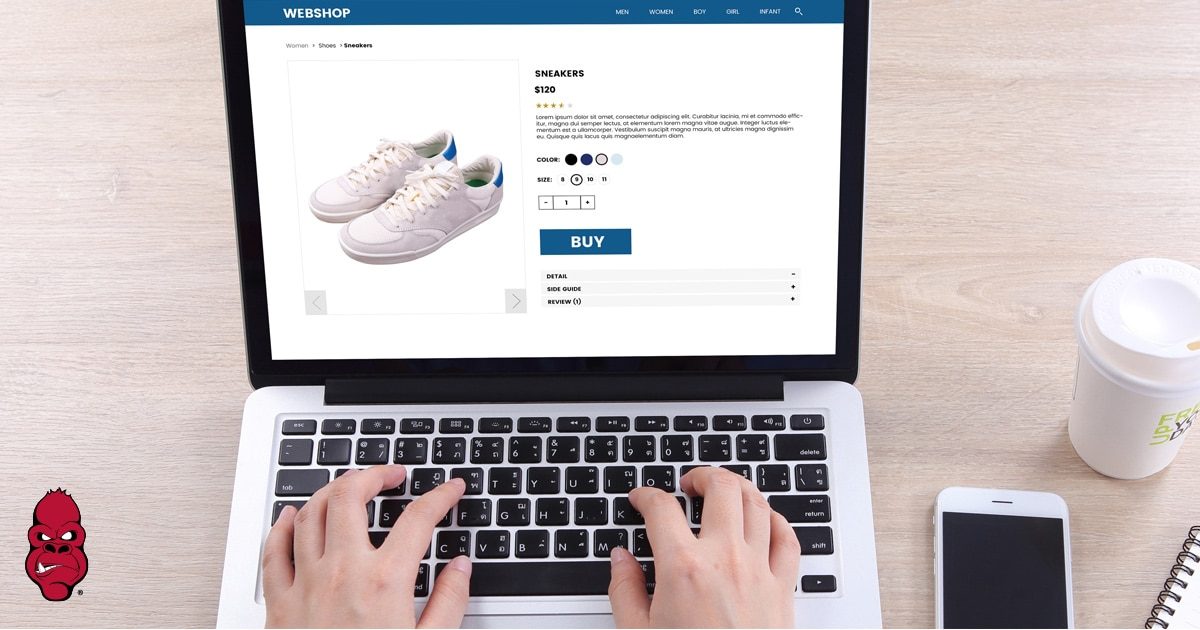In these volatile and unpredictable days, starting an e-commerce store is a great fallback to your 9-to-5 job. With more and more people increasingly relying on online stores for everything from food, clothing, appliances, and digital products, you have a good chance at success.
If you really work hard at it, your online store can even earn enough to replace your full-time job.
As a matter of fact, in the US alone, e-commerce sales generated $209.5 billion during the third quarter of 2020.
So, if you’re on the lookout for an alternative source of income, here are some tips on how to start your own e-commerce store.
Where to Start Your Online Store?
The three major channels available for setting up your online store are your own website, e-commerce platforms, and marketplaces. Each has its own advantages and disadvantages. Your choice should be based on the features you are comfortable working with for a sustained period.
Below is an overview of these online store options. The next steps you take will depend on the option you select.
Building Your Own Website
It may seem daunting, but in this digital age, building your own website isn’t as difficult as it sounds. All you need are a computer, an internet connection, and your willingness to learn. You have a broad array of provider options, most of which are user-friendly, and none will break the bank. If you are not at all technical or just want someone else to handle that part, you can always hire someone to build the website.
The most widely used website builder is WordPress. For an online store, it’s reliable and comes with a host of features, plug-ins, apps, and tools. You can showcase your products, accept payments, process orders, and manage inventory on your backend.
Pros
A website establishes your brand’s identity. It lends the credibility that most buyers seek. Over time, your brand can earn a good reputation. With your website, you’re the boss and you are accountable only to your customers. You have the last word on pricing and rules covering shipping, refunds, and returns. And, of course, your expenses will be relatively lower than the other options. All you need to pay for are the platform, the host, and the credit card processor.
Cons
The biggest challenge in creating your own online store is generating traffic. You should expect to invest a lot of time and quite a sum in marketing and advertising. And just because your business is conducted online doesn’t mean it won’t have the structure of a brick-and-mortar store. Storage space and personnel are vital to scaling up, even if you start as a one-person company in your garage.
Using an Ecommerce Platform
Ecommerce platforms are subscription-based websites that allow individuals to sell tangible goods and digital products by creating their own online stores. Shopify and Magento are the most popular sites in this category. Other platforms come in the form of standalone software that requires installation on a web server, like WooCommerce and BigCommerce.
Pros
Ecommerce platforms offer all the bells and whistles you need for an online store. You can manage your products, orders, and inventory. You also have the option to dropship, which means you don’t have to provide storage or shipping services. Rather, you just receive orders, forward them to your supplier, who ships directly to your buyers. All these transactions happen on the platform.
Cons
With an e-commerce platform, you get very little space to highlight your product’s features and benefits. Their product search mechanisms are also not as sophisticated as those of major search engines, or even marketplaces like Amazon and eBay.
Selling on Marketplaces
Online retail marketplaces are platforms that allow third-party sellers to offer their products by listing the items on the market’s website. Currently, the biggest of these are Amazon and eBay.
Pros
Amazon boasts a captured US market (Prime members) of 142.5 million in 2020, each spending an average of $1,400 each year. The e-commerce giant offers storage, packaging, and shipping for a small fee. These services fall under an umbrella called Fulfillment by Amazon (FBA) and include returns, replacements, and customer service. Sellers are encouraged to advertise their listings on the Amazon platform. Ads are highly targeted and placement rates are reasonable.
Cons
Amazon’s average referral fee is 15%, which is higher than that of other marketplaces. Competition on this platform is stiff, so you need to invest time and effort in choosing the right product and category. The company is also known to be very strict about sellers’ adherence to their policies, and consequences can be serious for violators. Amazon is also very customer-oriented when it comes to issues of refunds and returns.
5 Steps to Start Your Own Ecommerce Business
Whether you choose to build your own website, have an online store on an e-commerce platform, or join an online marketplace, the process to follow is universal.
Below are the 5 steps you should pursue, in chronological order, to ensure your success.
1. Create a Business Plan
No matter how small your business is at the start, having a solid business plan is crucial. It guides you towards achieving your objectives. Writing down your ideas and goals provides clarity amid the countless options available to you.
Below are the main points to include in your business plan.
Executive Summary
This one-page abridged version of your entire business plan, must contain concise answers to these questions: What is your business? What products do you sell? How are your products different from the competitors? Who is your target market? How will you sell to them? What is your revenue goal?
Company Overview
Define your business structure: sole proprietorship, general or limited partnership, or incorporated company. Explain your company’s vision, mission, goals, and core values. Include the nature of your business, the industry it belongs to, your personnel, and their respective salaries.
Market Analysis
Understanding your market is the basis of your product selection and marketing plan. Illustrate the competitive landscape and your buyer profile. Research on industry trends; this will help you create your own forecasts. Do a SWOT Analysis to identify the business’ strengths, weaknesses, opportunities, and threats.
Products and Services
Describe each product and service in depth. Sources and suppliers as well as substitutes or alternatives are vital information to be added.
Target Market
Map the profile of your potential customers. Demographics, buying behavior, and purchasing power will directly affect your decisions on pricing, packaging, shipping, marketing, and advertising.
Marketing Plan
Based on your products and target market, delve into the 4 Ps: Price (how much), Product (see Products and Services above), Promotion (all the marketing activities you intend to have), and Place (where you will conduct the activities).
Logistics and Operations
A big chunk of this section should focus on production – starting with creating your products, from source to point of sale. Include suppliers, facilities, equipment, inventory management, fulfillment, and shipping.
Financial Plan
Outline your income statement, assets and liabilities balance sheet, cash flow, and financial projections. For a new business, enter numbers that reflect your expectations based on market prices and projected expenses.
2. Find a Niche and Product to Sell
To find your niche, identify your passion. Managing your own business will take a lot of your time and energy, both of which can be fueled only by something you feel strongly about. Start at the general level of the industry, and work your way down to the specifics.
Example: Beauty > Skincare > Cleansing > Night Routine > 3 Bottles – Cleansing Gel, Toner Serum, Facial Cream
Use the following criteria when choosing the product(s) you will sell:
- Weight. Lower weight means less shipping cost.
- Cost. Lower sourcing, production, and packaging cost equal lower investment.
- Level of Use. Products consumed daily have a higher potential for repeat buys.
- Seasonality. Evergreen items sell year-round.
Make your niche and product research fast and simple by using services like AMZScout tools.
3. Find Suppliers
Thanks to technology, you have access to suppliers all over the world. You even have the option of private labeling ready-made products.
Wholesale manufacturers can be found on Alibaba and IndiaMart. These are your best choices for the lowest prices. Ordering and shipping are really easy, too, even for beginners. Most importantly, these platforms offer buyer protection.
To ensure quality, vet several suppliers. Have them ship samples before placing a large order.
If you opt for dropship, Oberlo is a reliable supplier, and they are directly connected to Shopify. Sunrise Wholesale is another type of dropship supplier – they can integrate their system directly into your website’s online store.
4. Manage Inventory
Inventory management involves stocking, replenishing, storage, and shipping. Again, this process depends on your choice of online store platform.
Your Own Website
WordPress offers plug-ins for inventory management, ranging from free to paid. These are easy to use, fully customizable, compatible with most operating systems, and can handle up to 5,000 products. And while you need to take care of storage and shipping, the plug-ins can assist you with handling orders and digital payments. Alternatively, you may integrate your website with Amazon’s FBA.
Ecommerce Platform
One of the advantages of this option is that inventory management is already built-in, which means you get real-time updates on the status of your stocks. Thus, you have enough lead time to order and replenish. This type of online store also provides warehousing and shipping services. Shopify, for instance, offers a Fulfillment Network that will efficiently store and ship products on your behalf.
Marketplaces
Among all marketplaces, only Amazon offers storage and shipping via FBA. You don’t even have to handle your products at all – those can be shipped directly to an Amazon warehouse by your supplier. You still control pricing, so it would be a good idea to use an FBA Calculator to compute your margins. Tracking and replenishing stocks are all done in your Amazon Seller account.
Marketplaces like eBay require you to store and ship your own products.
5. Products Promotion
When promoting your products, you need to fully understand your target market’s profile to identify the platforms to place your ads. Promotional activities should be focused on sites most visited by your potential buyers.
Your social media options include Facebook, Twitter, and Instagram and search engines such as Google, YouTube, Bing, and Yahoo.
Make sure your ads always include a button that redirects buyers to your online store, whether it’s your website, on an e-commerce platform, or in a marketplace.
Conclusion
If you’ve ever considered having your own e-commerce store as a secondary source of income, or as a fallback for a rainy day, now is the best time to do it. The market is ripe, your options are many, and technology has made it possible to have one up and running in a matter of days.







-300x158.png)


